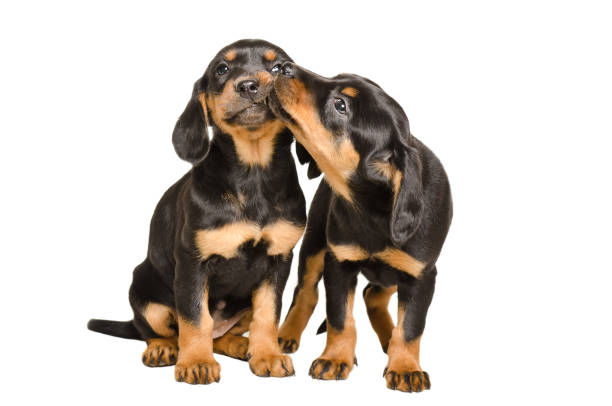The modern breed of hunting dog, which has been around since antiquity, was officially recognized in the 1870s. The Slovensky Kopov was first mentioned in writing in the 17th and 18th centuries when it was banned to cross this breed with others. This shows that Kopov was already well-known in hunting circles. The name “Kopov” is derived from the Hungarian word “kopo” which means “scent hound.” This breed’s ancestors are thought to have included the breeds Brandlbracke (Austrian Black and Tan Hound), Chart Polski, and Magyar Agar (Hungarian Greyhound).
A more coordinated approach to producing Kopovs began in 1915 when hound dog rules prohibited the use of tall breeds for chasing deer. At the same period, the color pattern of Kopovs began to be standardized.
In 1936, the present era of Kopov breeding began. A small number of individual dogs were chosen for a controlled breeding procedure with the goal of eliminating any undesired color and height variance. The Kopov population was eventually stabilized and the genotype was standardized over multiple generations. The Slovensky Kopov was recognized as a scenthound hunting dog by the FCI in 1963. The Slovak Hound Breeders Club was founded in 1988 in Bratislava, Slovakia.
Although it is extremely prevalent in its home country, it is only now being discovered by dog lovers in other nations.




 Health
Health Grooming
Grooming Exercise
Exercise Training
Training Nutrition
Nutrition